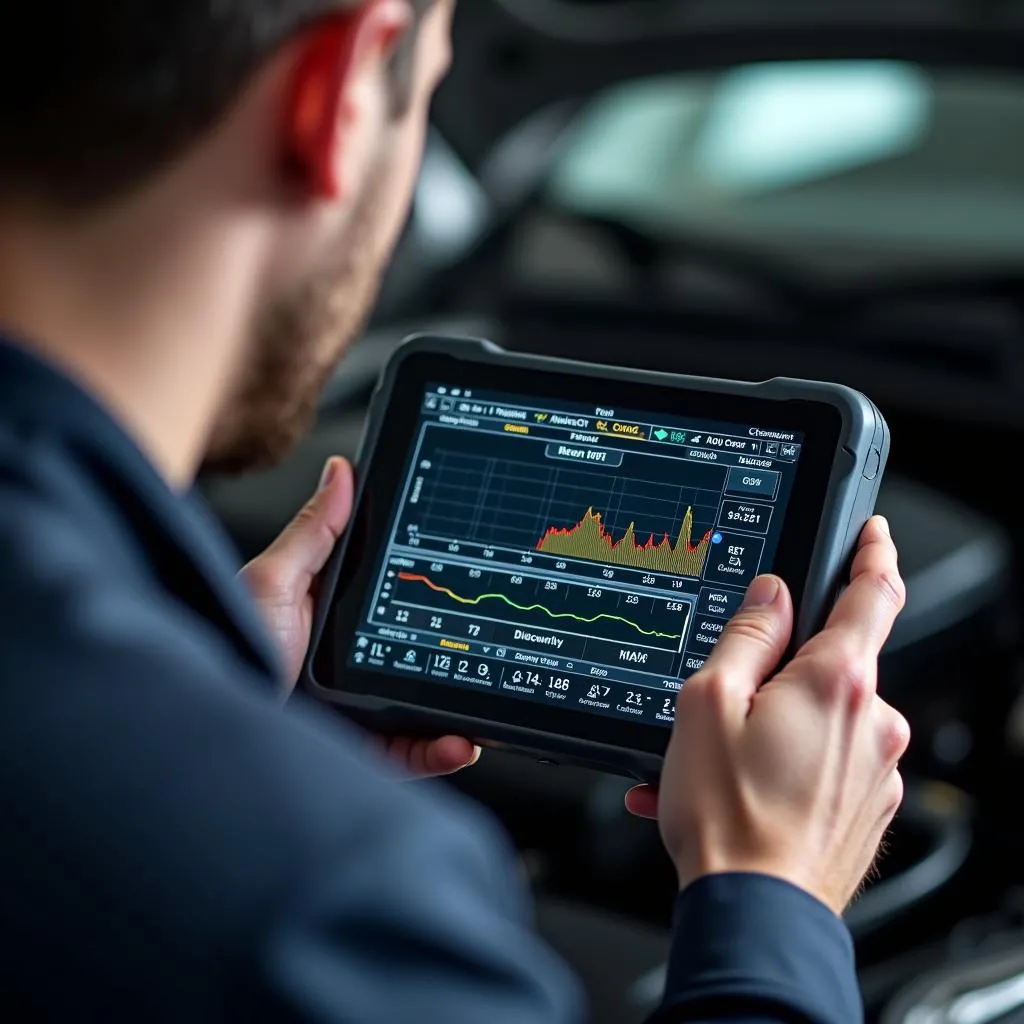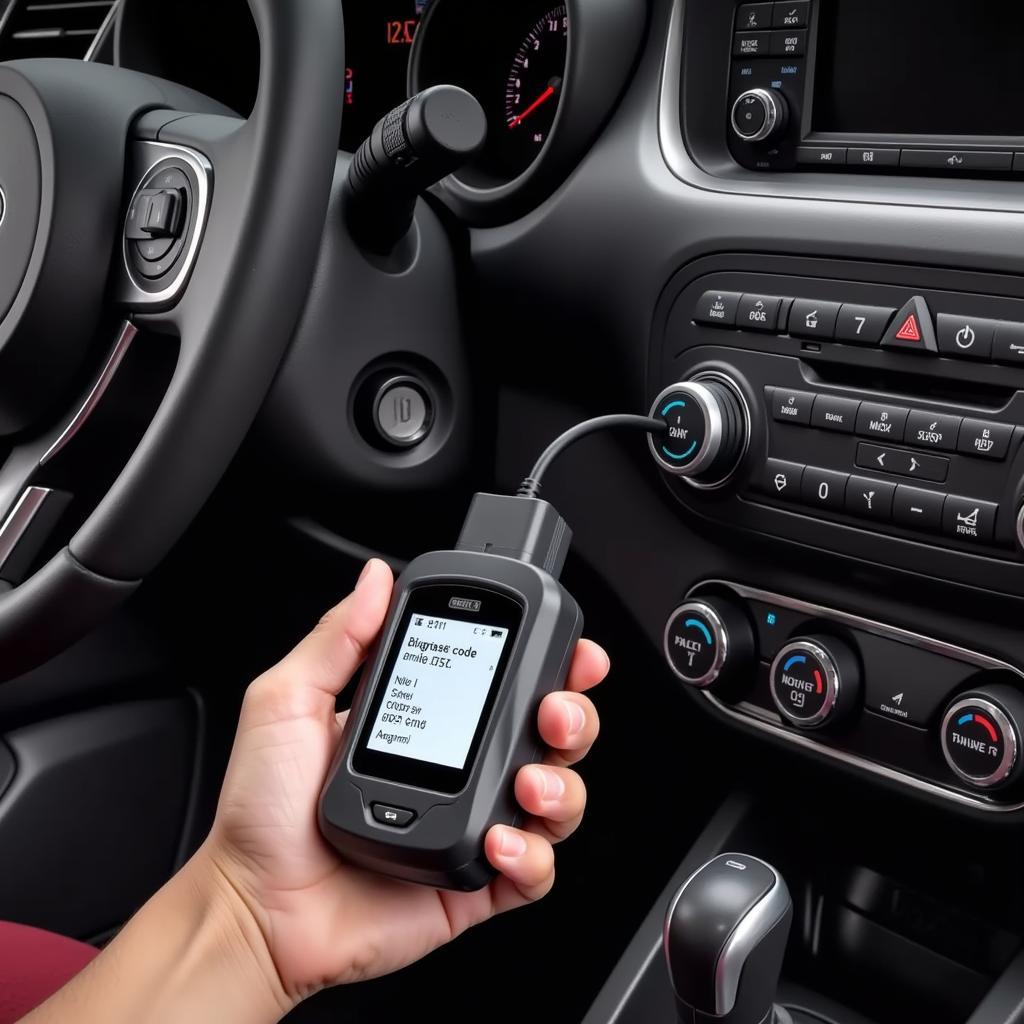Imagine this: You’re working on a 2018 Audi Q5 in your shop in Austin, Texas. The check engine light is on, and the owner complains of rough idling. You hook up your trusty Snap-on scan tool, eager to dive into the live data stream and pinpoint the issue. But as you navigate through the sea of PIDs, a nagging question pops up: “What’s the refresh rate of these parameters, and why does it matter?”
This, my friends, is a question that often gets overlooked, yet holds significant importance in the world of automotive diagnostics. So, buckle up as we delve into the intriguing realm of Snap-on scan tool PID rates.
Deciphering the Significance of PID Rate
The PID rate, or refresh rate, refers to how often your Snap-on scan tool updates the parameter values it’s reading from the vehicle’s Engine Control Unit (ECU). Think of it like frames per second in a video game – a higher refresh rate provides a smoother, more real-time representation of what’s happening.
From a technician’s perspective, a faster PID rate translates to:
- Faster Diagnosis: Quickly identify intermittent issues that might be missed with slower updates. Imagine trying to catch a fleeting sensor glitch with a sluggish refresh rate – it’s like trying to hit a moving target with a delayed reaction!
- Enhanced Accuracy: Obtain a more precise understanding of sensor behavior and system interactions.
- Improved Efficiency: Make informed decisions faster, minimizing downtime and optimizing your workflow.
From a technical standpoint, PID rate depends on various factors:
- Communication Protocol: Different protocols (CAN, J1850, etc.) have varying data transfer speeds, impacting the refresh rate. CAN, for example, typically allows for faster rates compared to older protocols.
- Scan Tool Capabilities: Your Snap-on scan tool’s processing power and software play a crucial role in determining how fast it can retrieve and display data.
- Vehicle-Specific Factors: The number of PIDs being read simultaneously and the ECU’s data transmission speed can influence the overall refresh rate.
 Mechanic using a Snap-on scan tool on a car
Mechanic using a Snap-on scan tool on a car
Navigating PID Rates in Real-World Scenarios
Now, let’s bring this down to earth with a few common scenarios:
Scenario 1: You suspect a faulty oxygen sensor causing erratic fuel trims. A high PID rate would allow you to observe the sensor’s live voltage signal for rapid fluctuations, confirming your suspicions much faster.
Scenario 2: You’re dealing with an intermittent transmission issue. A fast refresh rate on transmission fluid temperature, pressure, and gear position sensors can help pinpoint the root cause, even if the problem occurs briefly.
Scenario 3: You’re tuning an engine and need to monitor multiple parameters like ignition timing, air/fuel ratio, and boost pressure in real-time. A high PID rate is critical for making precise adjustments and achieving optimal performance.
“Time is money,” as the old adage goes, and in the fast-paced world of automotive repair, a speedy diagnosis can be the difference between a happy customer and a lost opportunity.
 A mechanic carefully analyzes live data from a car's ECU on a professional scan tool.
A mechanic carefully analyzes live data from a car's ECU on a professional scan tool.
Maximizing Your Diagnostic Potential
While you can’t control all factors influencing PID rate, here are some tips to optimize your experience:
- Invest in a High-Quality Scan Tool: Modern Snap-on scan tools are designed for fast data processing and high refresh rates.
- Limit the Number of PIDs Displayed: Focus on the essential parameters for the specific diagnostic task at hand.
- Understand Protocol Differences: Familiarize yourself with the communication protocols used in different vehicle makes and models to anticipate potential speed limitations.
Exploring Related Diagnostic Avenues
- Understanding Data Logging Capabilities: Learn how to effectively utilize data logging features on your Snap-on scan tool to capture and analyze parameter changes over time, even if the live refresh rate is limited.
- Leveraging Oscilloscope Functionality: Explore the use of an oscilloscope in conjunction with your scan tool for even more granular analysis of sensor signals and electrical waveforms.
Do you have any other questions about Snap-on scan tools, PID rates, or other automotive diagnostic topics? Check out our other informative articles:
- Scan Tool for Energi
- Best Scan Tool for 2016 GM Vehicles
- Best OBD2 Scanner for Chevy
- Chrysler OEM Scan Tool
- Launch X431 V vs. Autel
Need personalized assistance with your diagnostic setup? Contact our team of automotive experts on WhatsApp at +84767531508. We’re here to help you unlock the full potential of your diagnostic tools!


